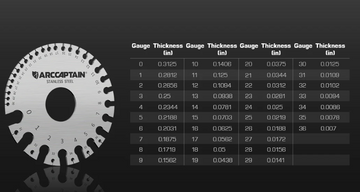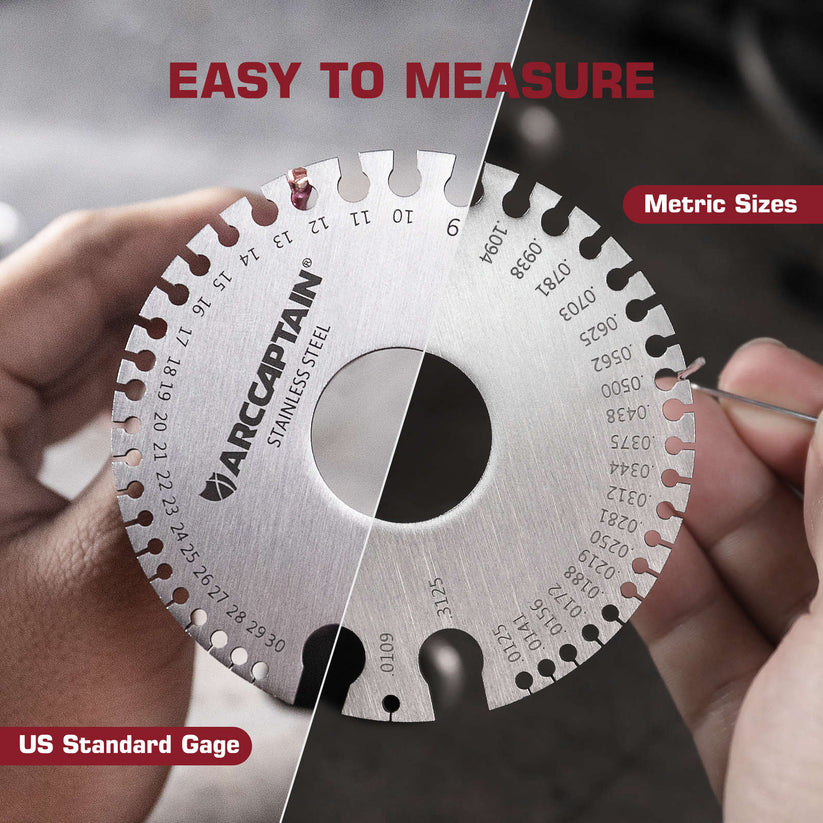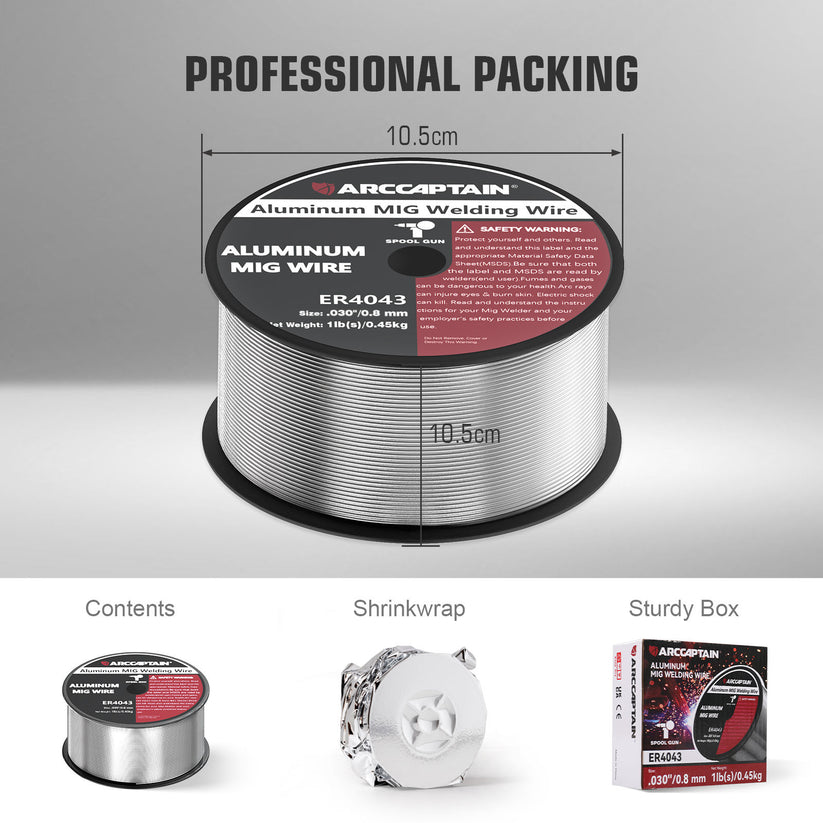
Choosing the right wire gauge is one of the most important steps in any electrical project. The correct wire size keeps your system safe, prevents overheating, and ensures your devices get the right amount of power.
Want to make sure you always pick the right wire for the job? Read on to learn exactly how to know what gauge wire to use and how to apply it safely and confidently at home, in your car, or for your workshop projects.
What Is Wire Gauge and Why It Matters
Wire gauge measures the thickness of a wire. In the United States, we use the American Wire Gauge (AWG) system.
The smaller the AWG number, the thicker the wire. For example, a 12‑gauge wire is thicker and can carry more current than a 14‑gauge wire.
Thicker wires handle more electrical current (amps) without overheating. Choosing the correct gauge ensures your wiring meets both performance and safety standards set by the National Electrical Code (NEC).
How to Know What Gauge Wire to Use: The Three Main Factors
When deciding on wire gauge, remember that three main factors matter most: amperage, voltage, and distance. Each affects how electricity flows through your wire.
1. Amperage (Current Load)
Amperage is the amount of electrical current your wire carries. The higher the amperage, the thicker the wire must be.
Here’s a quick reference for copper wires with 60°C insulation (typical for NM‑B home wiring, per NEC Table 310.16):
- 15 amps → 14‑gauge wire
- 20 amps → 12‑gauge wire
- 30 amps → 10‑gauge wire
Always check your circuit breaker or equipment label for the correct amperage rating before selecting a wire.
If you’re using aluminum wire, remember it carries less current than copper and must be one size thicker for the same amperage.
For example, while a 12 AWG copper wire handles 20 amps, a 12 AWG aluminum wire is only rated for 15 amps.
2. Voltage
Voltage affects how far electricity can travel efficiently. Lower‑voltage systems (like 12V or 24V DC in vehicles or solar setups) lose more voltage over distance.
In standard home wiring (120V or 240V AC), amperage is usually the main concern, but voltage drop still matters for long runs.
3. Distance (Wire Run Length)
As wire length increases, so does resistance, which causes voltage drop. To prevent this, use thicker wire for longer distances.
The NEC recommends keeping voltage drop under 3% for branch circuits and under 5% total for feeders and branch circuits combined.
How to Know What Gauge Wire to Use for Home Circuits

Most household circuits use 14‑gauge or 12‑gauge copper wire. The right choice depends on your circuit’s amperage and what devices it powers.
- 14‑gauge wire: For 15‑amp circuits (lighting, small outlets).
- 12‑gauge wire: For 20‑amp circuits (kitchen, bathroom outlets).
- 10‑gauge wire: For 30‑amp circuits (dryers, water heaters).
⚠️ Important: Per NEC 240.4(D), you cannot use 14‑gauge wire on a 20‑amp circuit. Always match the wire to the breaker rating.
How to Know What Gauge Wire to Use for Cars, Homes, and Outdoor Projects
Different setups require different wire sizes. Let’s look at how this works in real‑world projects.
For Car Audio and Amplifiers
Car audio systems use 12V DC power, which means voltage drop happens quickly over distance. The longer the wire or the higher the current draw, the thicker the wire should be.
📌 If you’re working with car audio or welding setups, check out MIG Wire Sizes: Choosing the Right Wire for Your Welding Projects to see how wire thickness affects power and performance.
For Outdoor or Extension Cords
Outdoor cords must be rated for wet or damp locations and marked with a “W” or “W‑A” per NEC 400.4. Use thicker wires for power tools or long extension cords to prevent overheating. Also, make sure your wire is sunlight resistant if exposed to direct sunlight.
For Solar, RV, or Marine Systems
These systems often run on 12V or 24V, so voltage drop is a major concern. Use thicker wires for longer distances to maintain power efficiency.
📌 If you’re setting up solar or portable power systems, don’t forget to browse MIG Welding Wire Speed and Voltage Chart: Finding the Right Settings for Your Welds to understand how voltage and current interact in real‑world applications.
The Rule of Thumb for Picking the Right Wire Gauge

Here’s a simple way to remember how to know what gauge wire to use:
- Find your circuit’s amperage.
- Check the distance of your wire run.
- Match it to a wire gauge chart based on the NEC Table 310.16.
If you’re unsure, go one size thicker for safety. It’s better to have a wire that’s slightly oversized than one that’s too thin.
Check Related Products
📌 For more on material differences, check out MIG Welding Wire Types: A Complete Guide to Choosing the Right Wire.
Pro Tip: Always choose wire based on the lowest temperature rating of any connected device and consider ambient temperature adjustments for hot environments.
What Happens If You Use the Wrong Wire Gauge
Using the wrong wire gauge can cause serious safety issues:
- Too thin: The wire overheats, melts insulation, and can start a fire.
- Too thick: It’s harder to bend and connect, and costs more than necessary.
Always double‑check your wire size before installation. A few minutes of checking can prevent costly and dangerous mistakes.
📌 If you’re comparing wire types and conductivity, discover Flux Core Wire vs Solid Wire: Which One Should You Use?.
Quick Reference: Wire Gauge to Amp Chart (Copper Conductors)
Use this chart as a starting point when planning standard residential or light‑duty wiring projects.
|
Wire Gauge (AWG) |
Max Amps (60°C Insulation) |
Common Use |
|---|---|---|
|
14 AWG |
15 amps |
Lighting, small outlets |
|
12 AWG |
20 amps |
Kitchen, bathroom circuits |
|
10 AWG |
30 amps |
Dryers, water heaters |
|
8 AWG |
40 amps |
Large appliances |
|
6 AWG |
55 amps |
Subpanels, heavy tools |
Source: NEC Table 310.16 (2023 Edition), Copper Conductors, 60°C Column.
Note: Ampacity ratings are based on a 30°C (86°F) ambient temperature. In hotter environments, you may need to use a thicker wire or adjust ampacity according to NEC Table 310.15(B)(1).
Always choose wire based on the lowest temperature rating of any connected terminal or device (often 60°C for residential receptacles and switches).
How to Identify What Gauge Wire You Already Have
Most wires have printed markings on their insulation that include the gauge (AWG), insulation type (like THHN or NM‑B), and voltage rating (e.g., “12 AWG NM‑B 600V”). If no markings are visible, use a wire gauge measuring tool or caliper and compare it to a chart.
📌 For aluminum or specialty wires, check out Choosing the Right Aluminum Welding Wire for the Perfect Weld to understand how material type affects wire selection and strength.
Safety Tips Before You Start Any Wiring Project
Before you begin any electrical work:
- Turn off power at the breaker panel.
- Use only UL‑listed wires and connectors.
- Follow local building codes and NEC guidelines.
- If you’re unsure, hire a licensed electrician.
These steps are recommended by the Electrical Safety Foundation International (ESFI) and CPSC to prevent electrical fires and injuries.
Safety Reminder: This guide is for educational use. Always check your local code and consult a licensed electrician for specific installations.
Common Mistakes When Choosing Wire Gauge
Avoid these common errors when selecting wire sizes:
- Guessing instead of checking amperage.
- Ignoring wire length and voltage drop.
- Mixing copper and aluminum without proper AL/CU‑rated connectors (per NEC 110.14).
- Using indoor wire outdoors or in damp areas.
Following NEC standards ensures your wiring is both safe and efficient.
Conclusion
Knowing how to know what gauge wire to use helps you work safely and efficiently on any electrical or wiring project. By understanding amperage, voltage, distance, insulation type, and temperature ratings, you can confidently choose the right wire every time.
Visit ArcCaptain for more helpful guides and expert tips on wiring, welding, and electrical safety. Explore high‑quality welding machines, tools, gears and accessories to help you tackle any project with confidence.
Frequently Asked Questions
How can I tell what gauge wire I need?
Check your circuit’s amperage and length. Then use a wire gauge chart based on NEC Table 310.16 to find the correct size. Always round up if your wire run is long or your current draw is near the wire’s limit.
Do I need 12 or 14 gauge wire?
Use 14‑gauge for 15‑amp circuits and 12‑gauge for 20‑amp circuits. Never use 14‑gauge wire on a 20‑amp breaker, as it violates NEC 240.4(D) and poses a fire risk.
What happens if a wire gauge is too big?
It’s safe but less practical. Thicker wires are harder to install and cost more, but they won’t overheat.
How do I choose wire size?
Match wire gauge to the circuit’s amperage, voltage, and distance. Always follow NEC guidelines and use UL‑listed products.


